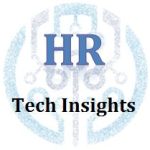 Many HR software packages include built-in analytics. This is a good thing, some data is better than no data. However, as HR gets more sophisticated, we need to move beyond accepting a vendor’s claim about built-in analytics and understand exactly what those analytics can and cannot do.
Many HR software packages include built-in analytics. This is a good thing, some data is better than no data. However, as HR gets more sophisticated, we need to move beyond accepting a vendor’s claim about built-in analytics and understand exactly what those analytics can and cannot do.
The first observation is that for most HR software it would be better to describe the built-in capability as “reporting” rather than “analytics.” Again, reporting is a good thing, but at this point HR should be distinguishing between reporting data and doing an analysis — even if there is no sharp line between the two.
An example of the sort of thing built-in reporting usually cannot do is determining how (retail) store revenue is affected by engagement. The reason the analytics/reporting tools that comes built into a software package can’t do this kind of analysis is that the two key sets of data (in this case engagement and store revenue) come from different sources.
The need to combine data from different sources is one of the main reasons companies, even companies with a modern HRMS or ATS, will buy specialized HR analytics software like PeopleInsights (small to mid-sized firms) or Visier (mid-sized to large firms). These packages can pull data from many sources into a data warehouse where it can easily be manipulated. Macromicro, a standalone analytics and visualization package, also uses a data warehouse.
Specialized analytics packages using a data warehouse model generally outperform built-in analytics/reporting for several reasons:
- Integrating data from several sources – PeopleInsights notes that this is something they can do relatively easily, it’s not as daunting as it was a decade ago.
- Speed – Macromicro says it would be impossible to do fast interactive visualizations without pulling the data into a data warehouse.
- Data cleaning – Visier reports that you often need to clean data before analysis (even just for basic reporting) and you can do this while you pull the data into the warehouse.
- More advanced analytics – Specialized analytics vendors generally have more sophisticated tools than found in the reporting/analytics build into your HRMS, ATS, LMS or other transactional HR software.
What’s interesting
John Pensom, CEO of PeopleInsights, says that cloud-based technology has really leveled the playing field for small and mid-sized companies. They now can have HR software, including analytics software, that rivals what the big companies have. In fact, sometimes big companies are stuck with legacy on-premise systems which are not as capable as the HR software a much smaller firm gets via the cloud (i.e. SaaS)
What’s really important
- Figure out what the analytics built-in to your existing HR software can and cannot do. If it is really just reporting, make sure leadership knows this so that they don’t turn down requests for specialized analytics software on the ground that “you already have it built-in.”
- To find out what the built-in analytics can do, don’t ask the vendor for a demo of all the reports it can spit out. Ask for a demo showing where it helps you make decisions. For example, if it can show you “we need to push store engagement to a certain threshold, but there isn’t much gain in improving it beyond that” then that guides decisions on your investments in engagement.
